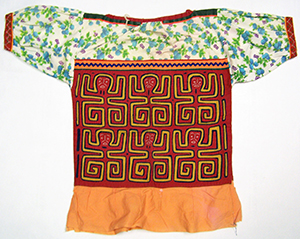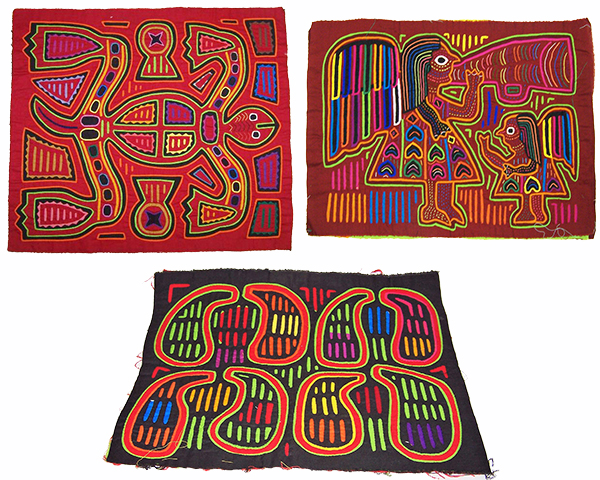Panama: Make a Guna Mola
Who are the Guna?
The Guna, formerly known as the Kuna (or Cuna), are an indigenous people of Panama and Colombia. In October 2011, the Panamanian government recognized the claim of the people and changed the name to Guna. Since that time the government has promoted the spelling Guna.
The name of the Guna language is dulegaya, which means “people-mouth.” In the Guna language, they call themselves dule or tule, which means “people.”
Traditionally, the Guna lived in the central regions of Panama and the surrounding San Blas Islands off the Atlantic coast. Today, most of the 300,000 Guna people still live in small villages in Panama and Colombia, and about 50,000 live on the 49 major islands of San Blas.
What is a Mola?
A mola is a traditional textile made by the Guna women from layers of colored fabrics that are stitched together and cut using applique techniques to create patterns and pictures.

A mola blouse from the Lam Museum collection
In the Guna language, mola originally meant bird plumage. Now the word mola can refer to two things. One is the simple yoke-type blouse worn by Guna women every day. This traditional blouse is created by sewing elaborately designed front and back panels with other fabrics. Today, many people also refer to the decorative panels themselves as molas.
How They are Made
Mola panels are handmade using what is called a reverse appliqué technique. A mola maker places several layers, anywhere from two to seven, of different-colored fabrics on top of each other and sews them together. Then she cuts into the top layer and continues to create her design by cutting away parts of each fabric layer. The edges of the layers are then turned under and sewn down. Sometimes a mola maker draws her design out first, but often she just follows an idea in her head.
Usually mola panels are bright and colorful with symmetrical or asymmetrical patterns. Plant, animal, figurative, and abstract designs are used to create molas. Guna women leave as little unworked space as possible because they believe evil spirits can settle in the free spaces.

Mola panels from the Lam Museum collection
Guna women have been making mola panels for about a century and their traditional purpose was to decorate functional items of clothing. Today, mola panels are sold to tourist and collectors to be used in fashion, decoration, and as art. Mola panels have become an important economic resource for Guna women.
Let’s make a Paper Mola!
You will need:
• Black cardstock or construction paper for background
• Colored papers for design
• White or drawing paper for template
• Pencil
• Scissors
• Glue or glue stick
This first video from Christin Congdon shows you how to make a paper mola:
If you want to stitch or embellish your mola, you will need:
• Colored yarn
• Large holed needle
• Crayons or markers
Part 2 shows how to stitch your mola:
